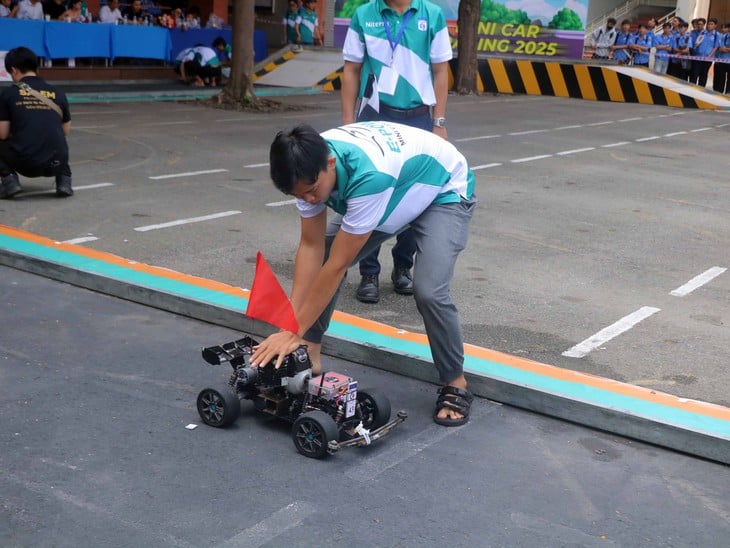
A car participating in the competition - Photo: TRONG NHAN
On the morning of May 24, at Cao Thang Technical College, the annual Mini Car Racing model car competition entered the final round, marking the 10th year this technical playground has been held.
This year's competition attracted 350 students from 70 teams to register, from 10 universities and colleges such as University of Technology (Ho Chi Minh City National University), Ho Chi Minh City University of Technical Education, Tra Vinh University, Van Lang University, Saigon Gia Dinh College...
After 2 rounds of technical testing and preliminary competition, 27 excellent teams entered the final round.
Mr. Nguyen Ngoc Thanh - Head of the Department of Mechanical Engineering, Cao Thang Technical College, head of the organizing committee - said that this is a technical competition for model cars designed and manufactured by students themselves, at least 50%, with dimensions not exceeding 80 x 50 x 50cm, using 2-stroke gasoline engines (22 - 33cm³).
The car is remotely controlled via phone via wifi connection, integrating both automatic control elements and modern connection technology.
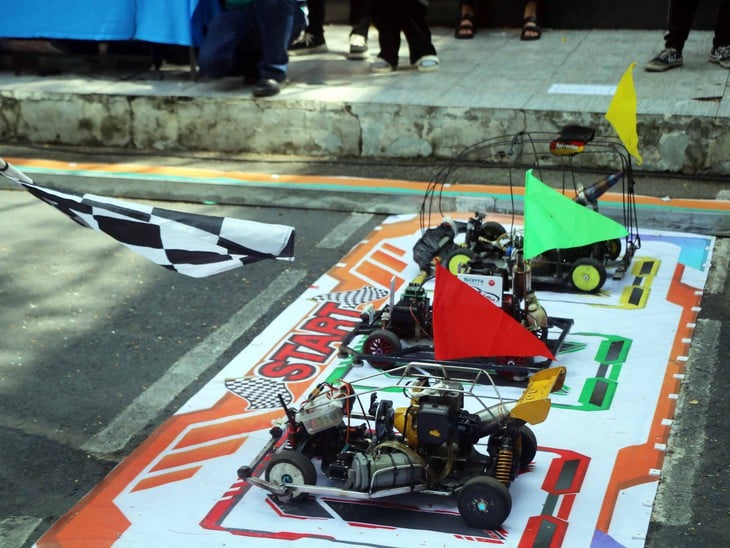
Each race will consist of 3 cars from 3 teams. The car that completes 2 laps first will win. If all 3 cars fail to reach the finish line, the car with the longest distance will win - Photo: TRONG NHAN
This year's theme "E-Power" encourages teams to integrate hybrid technology (combining gasoline and electric engines), aiming to save fuel and protect the environment.
The final round consisted of 13 knockout matches. Many teams had to overcome tough challenges to complete the race, such as losing wifi connection, slipping chains, broken axles, and shutting down the engine in the middle of a corner or on a steep incline.
Many teams had to urgently handle the situation in a short time to continue the race or accept stopping the game.
Nguyen Thai Thanh Long - a student majoring in automotive engineering at Cao Thang Technical College - shared that his team of 5 people had been preparing for 3 months.
"We focus on making the hardware really strong so that when a collision doesn't affect the electrical system. Many cars have damaged circuits when they collide, leading to loss of connection or requiring a long repair time," Long said.
Nguyen Trang Nguyen - a student at Binh Duong University - believes that the structural factor is the key.
"Some teams choose lightweight structures to increase speed, while others prioritize rigid frames to avoid damage. The engines of the teams are almost the same, so the difference lies in technical details, driving skills and coordination in handling incidents between members," Nguyen analyzed.
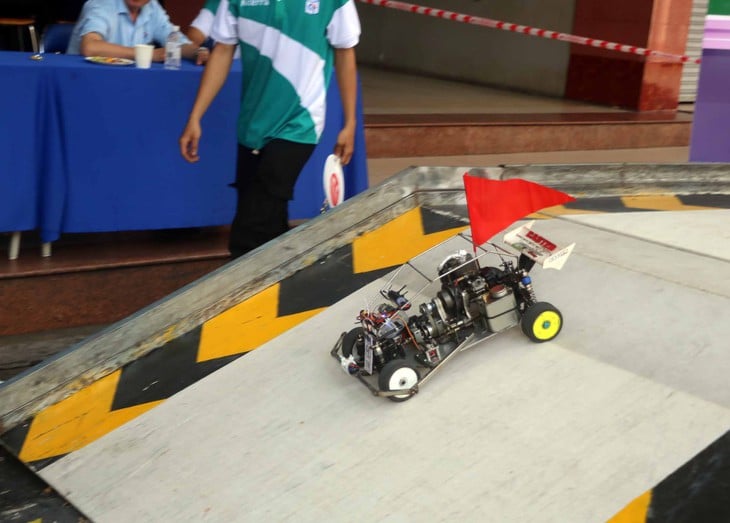
The bridge is an obstacle that cars must overcome - a challenge for many drivers. Many cars have been eliminated here - Photo: TRONG NHAN
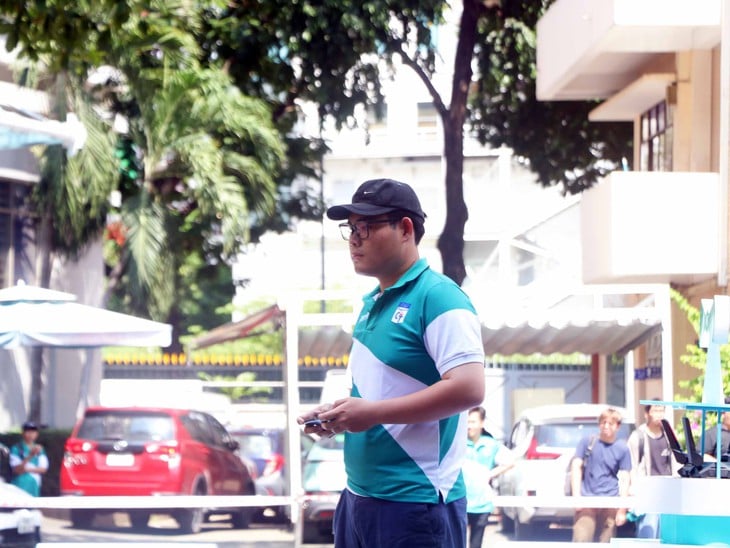
Each team has one member controlling the car via wifi network - Photo: TRONG NHAN
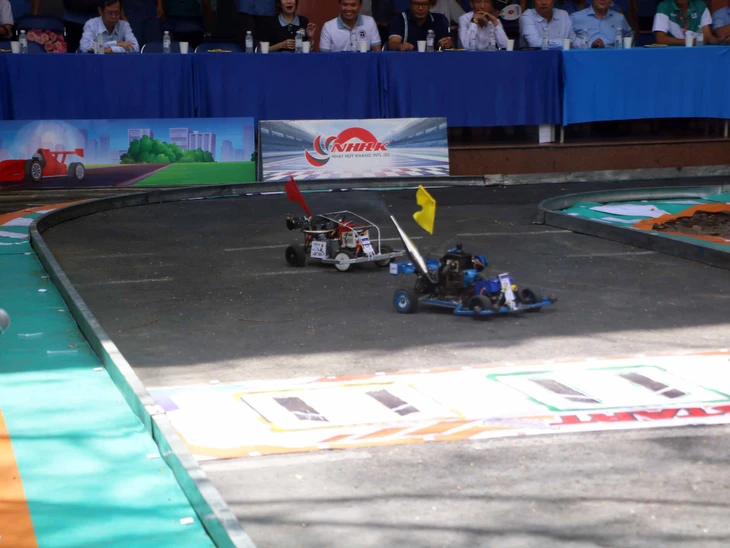
Fierce competition between two model cars. The further into the semi-finals and finals, the more dramatic the race becomes - Photo: TRONG NHAN
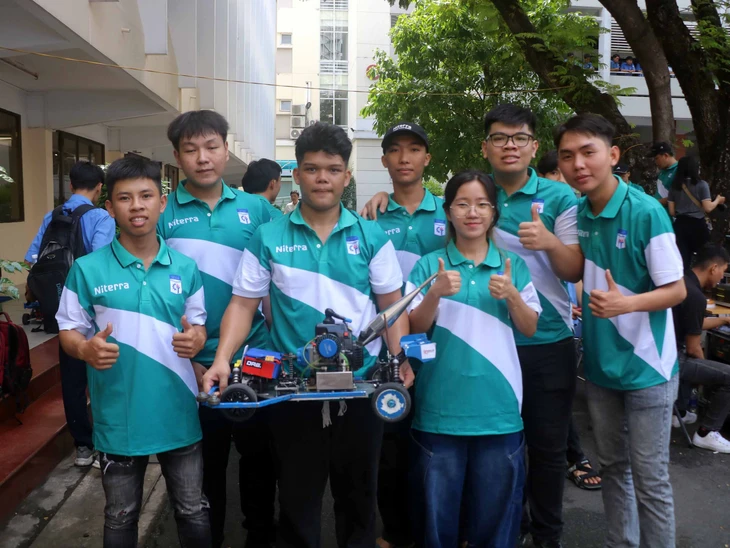
A racing team from Cao Thang Technical College - Photo: TRONG NHAN
Many lessons from model cars
In the end, the championship belonged to team BIG HEAD, Cao Thang Technical College.
Evaluating the contest, Mr. Tran Thanh Dat - General Secretary of the Ho Chi Minh City Automobile and Power Equipment Association - commented: "The contest helps students learn both professional and working skills. This is also an opportunity to discover and nurture technical talents for the automobile industry - an industry that is in great need of high-quality human resources, both skilled and innovative."
Source: https://tuoitre.vn/kich-tinh-man-tranh-tai-xe-mo-hinh-cua-sinh-vien-20250524144548297.htm



![[Photo] Comrade Nguyen Duy Ngoc visited and worked at SITRA Innovation Fund and ICEYE Space Technology Company](https://vphoto.vietnam.vn/thumb/1200x675/vietnam/resource/IMAGE/2025/10/23/1761174470916_dcngoc1-jpg.webp)

![[Photo] General Secretary To Lam and his wife begin their official visit to Bulgaria](https://vphoto.vietnam.vn/thumb/1200x675/vietnam/resource/IMAGE/2025/10/23/1761174468226_tbtpn5-jpg.webp)
![[Photo] Da Nang: Shock forces protect people's lives and property from natural disasters](https://vphoto.vietnam.vn/thumb/1200x675/vietnam/resource/IMAGE/2025/10/22/1761145662726_ndo_tr_z7144555003331-7912dd3d47479764c3df11043a705f22-3095-jpg.webp)
![[Photo] Award Ceremony of the Political Contest on Protecting the Party's Ideological Foundation](https://vphoto.vietnam.vn/thumb/1200x675/vietnam/resource/IMAGE/2025/10/22/1761151665557_giaia-jpg.webp)
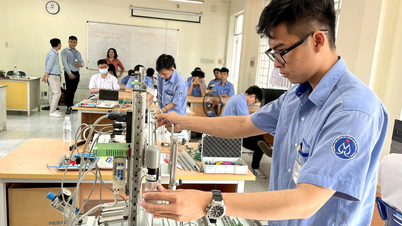

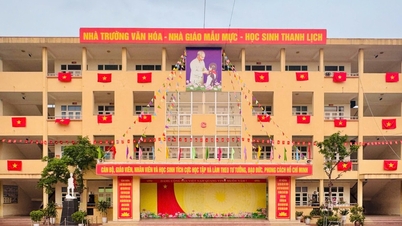
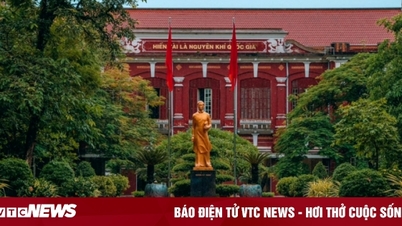

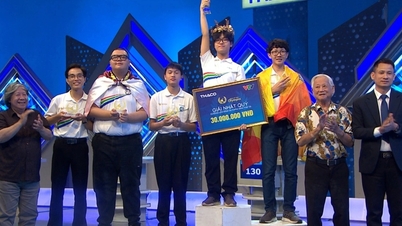

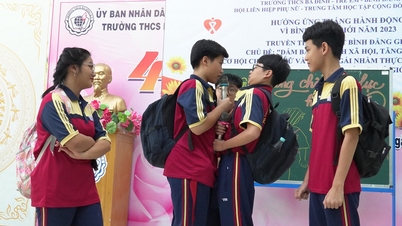









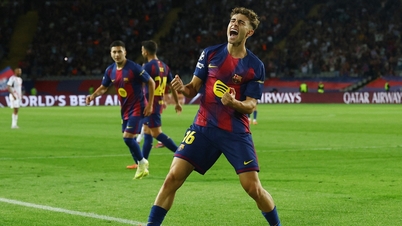





















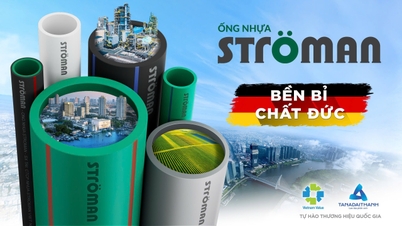

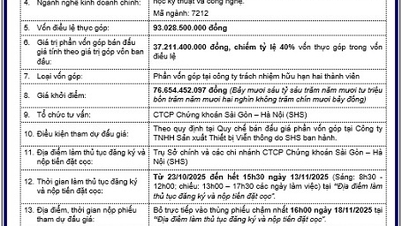
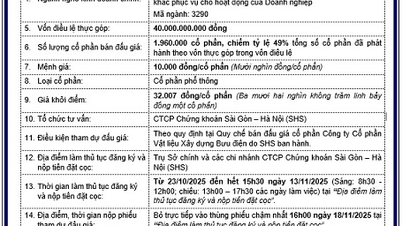



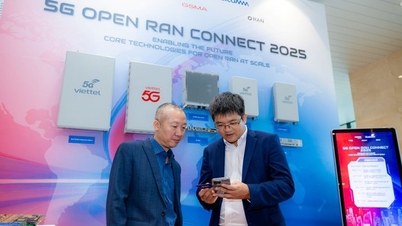











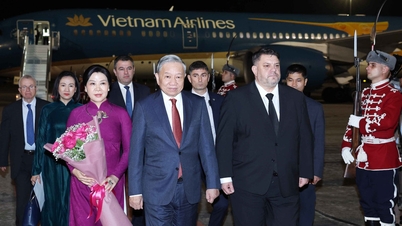



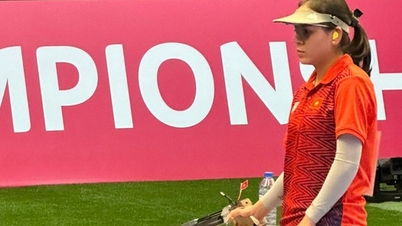

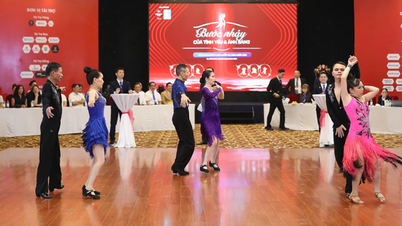
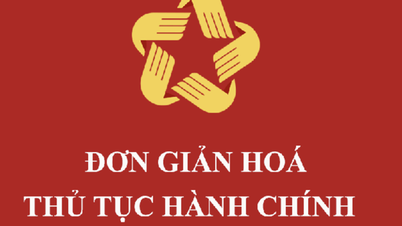
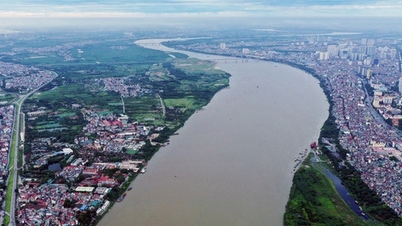
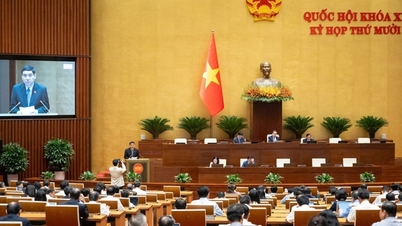
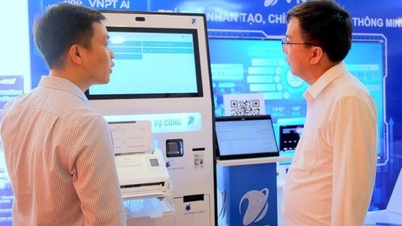

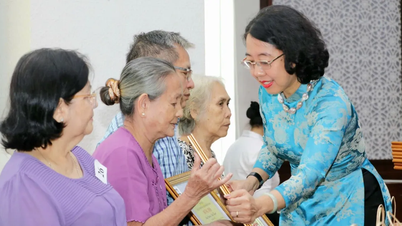


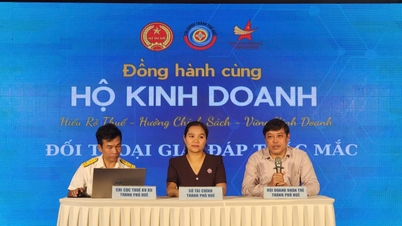





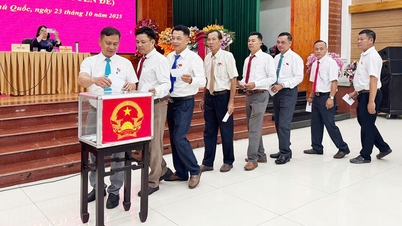











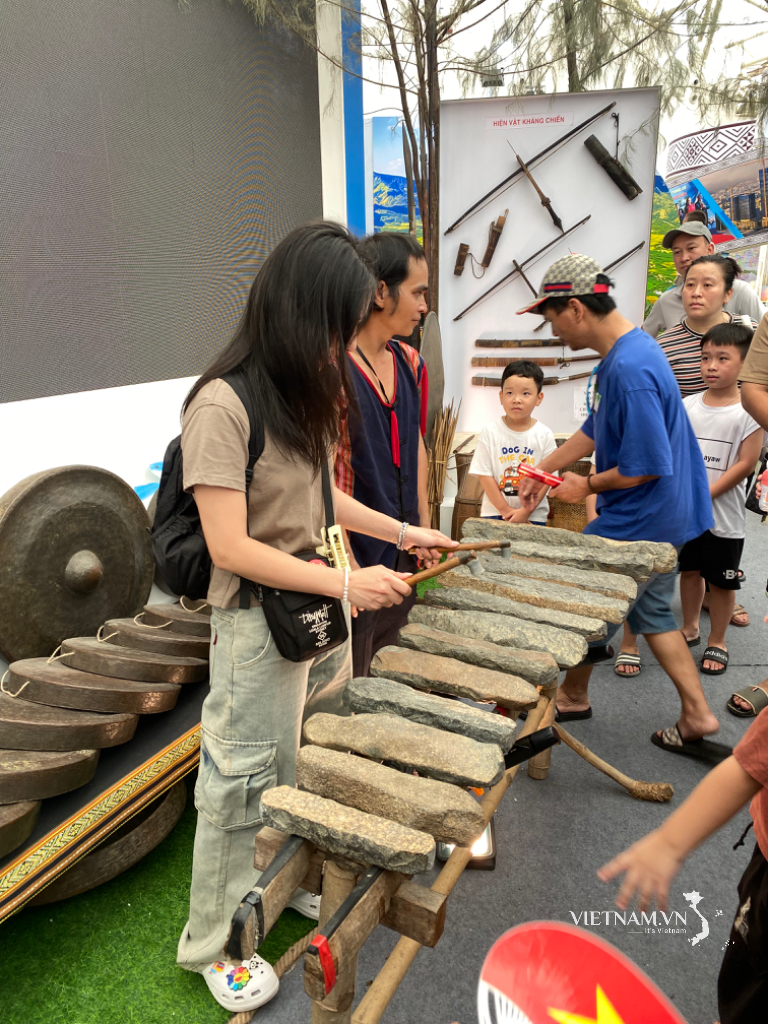



Comment (0)